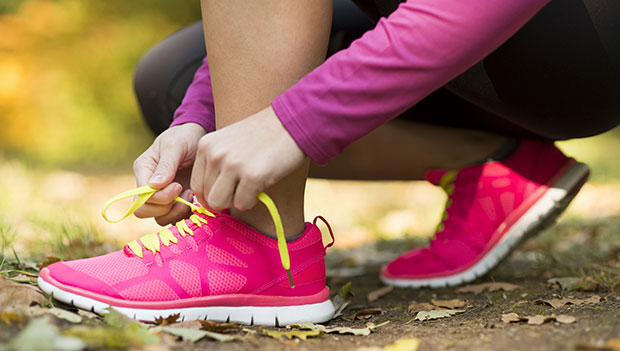
By clicking on the product links in this article, we may receive a commission fee at no cost to you, the reader. Sponsorships and affiliate commissions help support our research so we can help you find the best products. Read our full affiliate disclosure here.
Are you wondering about the best running shoes for beginners? You've come to the right place. Whether you just started running or need some new trainers, this guide will help you find the right pair. The options can feel overwhelming, but we're here to break them down so that you can get started breaking them in. By the end of this article, you'll know whether you require a neutral shoe with light cushioning, a supportive shoe for flat feet, or something else entirely.
The Best Running Shoes for Beginners - Our Top Picks
- Best Overall: Nike Air Zoom Pegasus 40
- Best for Walking and Running: adidas Supernova+
- Best for Road Running: Hoka Clifton 8
- Best Cushioned: Saucony Ride 15
- Best for Flat Feet: Brooks Ghost 14
- Best for Long Distances: Asics Gel Cumulus 24
- Best for Women: New Balance Fresh Foam 880 v12
- Best for Men: Reebok Floatride Energy 3
Once you've figured out the right style for your needs, check out our list of the best options available based on industry knowledge and research.
Why Trust Us?
ACTIVE.com's editorial team relies on the knowledge and experience of fitness and wellness experts including competitive athletes, coaches, physical therapists, nutritionists, and certified trainers. This helps us ensure the products we feature are of the highest standard. Collectively, the team has spent countless hours researching equipment, gear, and recovery tools in order to create the most accurate, authentic content for our readers. Customer satisfaction is also a key part of our review process, which is why we only feature products that are highly rated. More importantly, each member of our team is a fitness enthusiast. Fitness may be our job, but it is also our passion. Therefore, we strive to bring you products that we trust and would personally use.
Best Overall Running Shoes for Beginners - Nike Air Zoom Pegasus 40
SPECS
- Material: Synthetic mesh upper, React foam midsole, rubber outsole
- Weight: 1 lb. 6 oz. (W) pair, 1 lb. 4.8 oz. (M) pair
- Toe box: Roomier than its peers
- Width: Available in wide and extra wide
- Support: Neutral
- Heel drop: 10mm
The Nike Pegasus is a running shoe G.O.A.T. for a reason—its mix of React foam cushioning, plush tongue and collar, and webbing on the upper come together for a soft yet springy ride. The ride feels stable and cushioned without being overly bouncy.
This neutral trainer is a true workhorse for daily mileage and does well with everything from long runs to faster efforts. This iteration is a bit roomier than the Pegasus 39, so the toes can spread out more. Whether you're looking for your first shoe or your 100th, you can't go wrong with the Pegasus 40!
What We Like
- Soft mesh and wide eyelets in the upper for a superb fit
- Roomy toe box for comfort
- Outsole is grippy on all types of terrain
- Just the right amount of cushioning for comfort while still remaining responsive
What We Don't Like
- The shoe is a bit heavy
- Some wearers report that the upper can feel a bit warm
BUY: Nike Air Zoom Pegasus 4040
Best Beginner Shoes for Walking and Running - adidas Supernova+
SPECS
- Material: Engineered mesh upper, mix of Bounce (EVA) and Boost (TPU foam) cushioning in the midsole, rubber outsole.
- Weight: 9.8 oz. (W), 11.2 oz. (M)
- Toe box: Fits a bit narrow
- Width: Regular only
- Support: Neutral
- Heel drop: 10mm
Durable and reliable, the adidas Supernova+ is a reliable choice for the runner who prefers a bit more heft. This shoe's generous cushioning and 10-millimeter drop also offer support to heel-strikers and heavier runners.
The Supernova+ has some great features, including an extremely grippy outsole, reflective detailing, and an upper made from recycled materials. For everyday miles at an affordable price, it's a solid option.
What We Like
- Upper is made of 50% recycled materials
- Excellent traction along the grippy outsole
- Affordable shoe that's a daily workhorse
What We Don't Like
- The Boost foam adds weight to the shoe, making it a bit heavier than its peers
- Wearers said that the toe box fit a bit tight and the upper wasn't as breathable as they'd like
Best Beginner Shoes for Road Running - Hoka Clifton 8
SPECS
- Material: Engineered mesh upper, EVA midsole, rubber outsole
- Weight: 7.2 oz. (W), 8.9 oz. (M)
- Toe box: Can feel a bit narrow
- Width: Available in wide sizes
- Support: Neutral
- Heel drop: 5mm
If you like the feel of a maximalist shoe with plenty of cushioning, slip on a pair of the Hoka Clifton 8's. These shoes were built for racking up road miles. The Clifton has a solid combo of cushioning and responsiveness that is great for longer runs (or for anyone with achy knees).
These shoes are maximal, some might even say a bit clunky, but looks can be deceiving. You might be surprised by their relatively lightweight and low (5 millimeters) drop. They also feature some nice extras, such as pull tabs for easy entry and an exceptionally durable outsole.
What We Like
- Maximal cushioning for a cloud-like feel
- Updated midsole offers more cushioning at a lighter weight than the Clifton 7
- Early stage "Meta-Rocker" in the midfoot provides a smooth and snappy ride
What We Don't Like
- This is a heavier shoe, so save it for easy miles and long runs—not faster efforts
- The design is maximalist and a bit clunky
Best Cushioned Running Shoes for Beginners - Saucony Ride 15
SPECS
- Material: Mesh upper, midsole is made of PWRRUN (EVA-based material), and rubber outsole
- Weight: 7.9 oz. (W), 9 oz. (M)
- Toe box: Fits average to a bit snug
- Width: Available in wide widths
- Support: Neutral
- Heel drop: 8mm
The Saucony Ride is a great daily trainer for new and veteran runners alike. This shoe is versatile, with a moderate amount of cushioning and neutral support. It works for longer runs and shorter jogs and won't weigh you down if you decide to pick up the pace.
The newest version drops some weight (now coming in at a light 7.9 ounces for women and 9 ounces for men) while also adding some cushioning thanks to the new EVA-base cushioning material called PWRRUN in the midsole. The upper is made from a breathable mesh that works for even the sweatiest runs, and this iteration of the shoe also features a more flexible sole for smoother toe-offs and transitions.
What We Like
- The Saucony Ride 15 now has 3mm more cushioning and is still lighter than previous models
- This neutral, moderately cushioned shoe is a great versatile trainer for most runners
- The webbing around the midfoot's upper makes for a secure, locked-in fit
What We Don't Like
- Some wearers found the toe box to be snug
- This shoe is best suited for the roads—if you'll be running on trails or uneven ground you may need a shoe with more support
Best Beginner Running Shoes for Flat Feet - Brooks Ghost 14
SPECS
- Material: 3D-fit mesh upper, DNA loft cushioning in the midsole
- Weight: 8.8 oz. (W), 9.9 oz. (M)
- Toe box: Improved fit means a bit more room in the toe box
- Width: Comes in regular, narrow, and wide
- Support: Neutral
- Heel drop: 11.5mm
If you like a shoe that's soft and cushioned but not too heavy, the Brooks Ghost 14 might be your go-to pick. The latest model is the brand's first carbon-neutral shoe and incorporates recycled material in the upper. The upper also features a 3D fit for comfort, and the midsole uses DNA loft technology that adjusts to the runner's stride.
The DNA loft midsole and the segmented crash pad in the outer sole create an incredibly smooth ride. This model is a tad heavier than the Ghost 13, but not noticeably so, and the 11.5-millimeter heel-to-toe drop takes the pressure off the calf and Achilles (and distributes it across the hips and knees). For everyday miles, the Ghost 14 is a solid option!
What We Like
- The shoe has a carbon-neutral footprint and the upper is made with 30% recycled materials
- 3D-fit upper offers a comfy and secure fit
- DNA loft technology in the midsole adjusts to your stride to improve performance and reduce injury risk
What We Don't Like
- The higher drop (11.5mm) is more than a lot of shoes, may encourage heel striking
- The Ghost 14 is a bit heavier than the previous iteration
Best Beginner Running Shoes for Long Distances - Asics Gel Cumulus 24
SPECS
- Material: Engineered mesh upper, FlyteFoam and FF Blast midsole cushioning, combo of Asics Lite and AHARPLUS in the outsole
- Weight: 8.8 oz. (W), 10.1 oz. (M)
- Toe box: Average
- Width: Available in Wide and Extra Wide
- Support: Neutral
- Heel drop: 8mm
If you're on the hunt for a durable and fairly affordable everyday shoe, the Gel Cumulus is a great option. This shoe contains many of the same features as the Asics Nimbus, but for a bit less dough. Runners liked the soft, extra cushioned ride of the Cumulus and commented on the outsole's durability (thanks to the combination of Asics Lite and AHARPLUS rubber).
This shoe is chock full of technical features, including multiple types of midsole foam and gender-specific 3D Space Construction to tailor the fit of the upper. Additionally, the upper is made from recycled materials, which is always a smart, eco-friendly move.
What We Like
- The upper features recycled materials
- Includes gender-specific 3D SPACE CONSTRUCTION™ to address differences in fit
- OrthoLite™ X-30 sockliner for a soft feel
- Supremely soft and cushioned ride
What We Don't Like
- Some wearers say the upper feels a bit warm
- The Gel Cumulus is heavier than some of its peers
Best Beginner Running Shoes for Women - New Balance Fresh Foam 880 v12
SPECS
- Material: Synthetic mesh upper, Fresh Foam X midsole, rubber outer
- Weight: 8.3 oz. (W), 9.7 oz. (M)
- Toe box: Average
- Width: Available in wide sizes
- Support: Neutral
- Heel drop: 10mm
A reliable daily trainer, the 880 offers a stable and smooth ride. It's not bouncy or squishy like some of its peers, but it works well for many types of runners, from the newbie to the veteran marathoner.
The upper was redesigned with a double jacquard mesh for improved fit and design; the Libra/Vibrant print is especially well-suited to runners who want a dependable shoe with a feminine edge. With no-sew overlays, the chance of blisters and friction points is lower than ever. The Fresh Foam X midsole offers plenty of cushioning without too much-added weight and bonus, it's made partly from bio-based renewable materials. While this isn't the lightest shoe on the market, it's a solid option if you're looking for a neutral trainer that leans more toward stability.
What We Like
- Stylish and comfy mesh upper is breathable and good-looking
- Utilizes lightweight Fresh Foam X cushioning for a snappy ride
- Solid choice for everything from long runs to tempos
What We Don't Like
- A little heavy
- Can feel a bit more like a stability shoe than a neutral cushioned shoe
BUY: New Balance Fresh Foam 880 v12
Best Beginner Running Shoes for Men - Reebok Floatride Energy 3
SPECS
- Material: Knit upper, Float Ride Energy Foam midsole, Carbon rubber outer
- Weight: 7.1 oz. (W), 8.5 oz. (M)
- Toe box: Roomy
- Width: Available in wide sizes
- Support: Neutral
- Heel drop: 9mm
One of the most affordable neutral trainers in its class, the Reebok Floatride Energy 3 is responsive and cushioned. With a durable outsole and stretchy knit upper, this shoe will keep up with you for miles on the roughest terrains. It's a matter-of-fact shoe with no bells and whistles and comes in wider sizes for larger feet.
Reviewers often comment on the heel tab—great for pulling on the shoe—and the improved breathability of the upper. You can't go wrong with a trusted shoe brand like Reebok—which can help take you from uptempo runs to recovery jogs.
What We Like
- Very affordable price
- Durable and grippy outsole and a well-cushioned midsole
- Knit upper offers a good combo of fit and comfort
What We Don't Like
- Wearers say the shoe felt a bit long
- Heavier than some of its neutral cushioned peers
BUY: Reebok Floatride Energy 3
How to Use Running Shoes for Beginners
Besides the color and style of a shoe, there are a few important specs to consider when narrowing down your shoe selection. Keep in mind that even if something seems like it'll be perfect on paper, you'll never know until you try a shoe on. If you plan on buying a pair of running shoes online, check to make sure you can return or exchange them if necessary.
Heel-to-Toe Drop
The heel-to-toe drop of a shoe is the angle between the heel/rear foot and the toe/forefront. The greater the angle, the bigger the drop will be. Many traditional running shoes have a drop of about 10 millimeters, and the extra cushioning in the rear absorbs impact. However, in recent years, it's been more common for shoes to have a lower (or even zero) drop which is said to encourage mid or forefront striking vs. heel striking. Studies suggest that fore or mid-front strikers experience less impact and are less prone to injuries.
Cushioning
Many runners do well with a moderately cushioned neutral running shoe—think somewhere in the range of seven to nine ounces. Depending on your biomechanics and training needs, you may even prefer a lightweight or minimalist shoe. Something like the Vibram FiveFingers Shoes would be at the end of this. A lighter shoe generally means it's made with less material and has less cushioning. Conversely, a well-cushioned shoe will be heavier, but it can also absorb the impact of your feet hitting the pavement and provide a more cushioned feel. Finding the right amount of cushioning will take a little trial and error, so be sure to consider a few different styles.
Materials
A running shoe has quite a few components, but the main three are the upper, the midsole, and the outer. Most running shoe uppers are made from a breathable mesh, while the outsole is made of carbon or blown rubber (or a combination). The midsole is where the shoe gets most of its weight and cushioning and is often made from ethyl vinyl acetate (EVA) and polyurethane. A shoe also contains a sockliner, heel collar/counter, and an eyelet/lacing system. Learning different ways to lace your shoes can help you dial in the best fit.
Weight
How much a shoe weighs is tied closely to its material. In fact, most of a shoe's weight comes from its midsole, where the cushioning resides. Most running shoes range from about 6 ounces on the very light end to over 12 ounces on the heavy end. Many runners do well with a shoe right in the middle (think 8 or 9 ounces), but it depends on your body type and training needs. For example, lighter runners who race frequently may prefer a lighter shoe for workouts and races and a medium-weight shoe for everyday training.
A larger runner—200 pounds and up—may prefer the cushioning and shock absorption that comes with a heavier shoe. Your shoe's weight is important, but it's just one factor to consider when shopping for a new pair.
FAQs About Beginner Running Shoes
What's the difference between sneakers and running shoes?
These words tend to be interchangeable, but if you're looking for dedicated running shoes, you'll want to choose something with more cushioning and lighter weight than a pair of sneakers you'd wear with jeans.
Do I need running shoes to start running?
In general, yes. If you're headed out for your very first run and are unsure if you'll stick with the sport, it's probably fine to log a few miles with whatever sneakers you wear for walking or at the gym. But if you plan on running regularly, it's smart to get a pair of dedicated shoes to avoid injury. Running shoes are created with the right amount of cushioning and heel-to-toe drop to make running comfortable.
Is it better for shoes to be tight or loose
A well-fitting running shoe is ideal, but if you have to choose, it's best to opt for a slightly looser fit as you don't want the shoe to rub against friction points and cause blisters. Feet can expand during activity, so you may even consider going up about half a size compared to your everyday shoes.
How long should I run as a beginner?
How long and how far you run will depend on your fitness level and running goals, but in general, most beginners do well running 20-30 minutes at a time, a few times a week. You certainly don't have to run every day, so include rest days and cross-training like cycling into your week. And if 20 minutes of straight running feels tough, adding in walk breaks (think two minutes of running, followed by one minute of walking) can make things more enjoyable.
How to Start Running | Running Tips | Hydration for Runners | Best Running Shoes for Beginners | Most Comfortable Running Shoes | Best Sports Bras for Running | Best Running Jackets | Best Budget Treadmills | Best Budget Fitness Trackers
About the Author
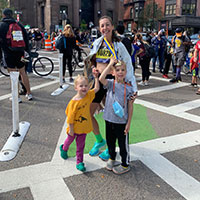
Megan is a runner and writer who resides in upstate New York. She is a former collegiate runner and regularly competes in marathons. Megan uses her personal experience in competitive running to review fitness equipment and write running guides.
Get ACTIVE on the Go


Couch to 5K®
The best way to get new runners off the couch and across the finish line of their first 5K.
Available for iOS | Android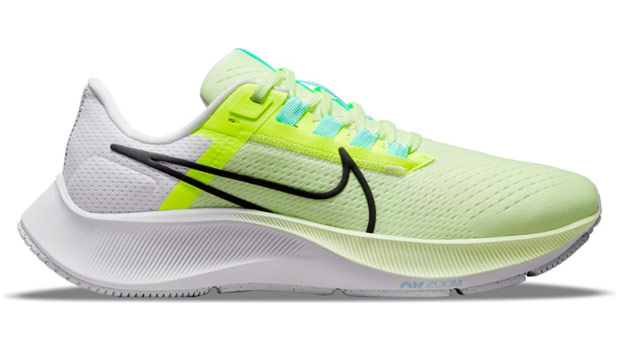

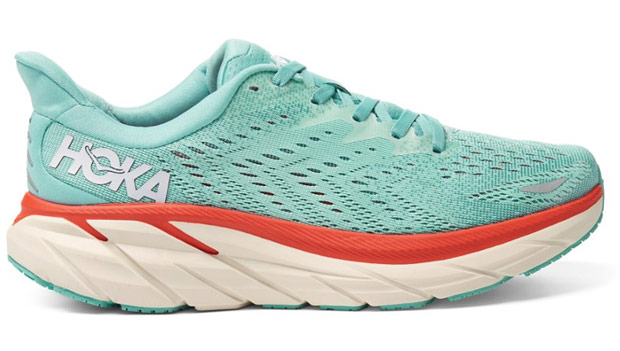
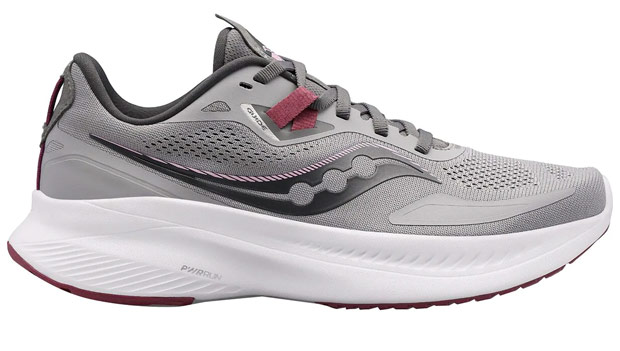

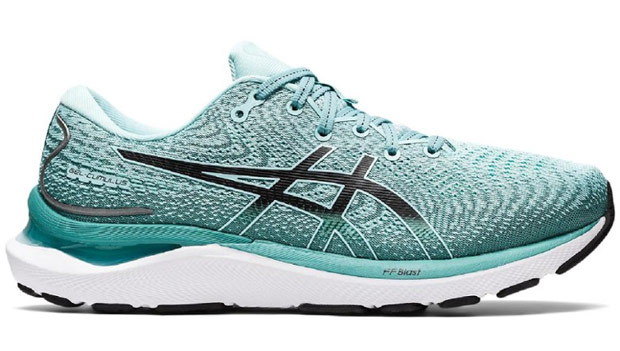
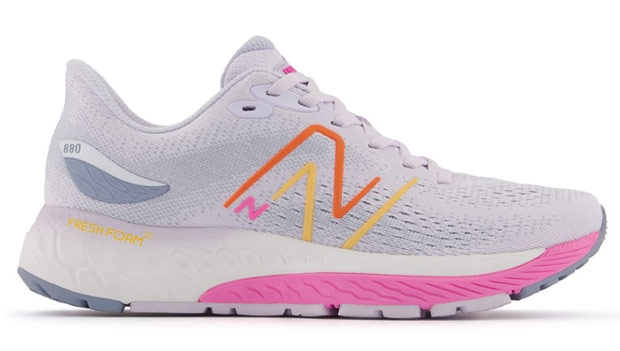






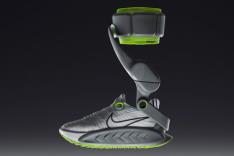


Discuss This Article